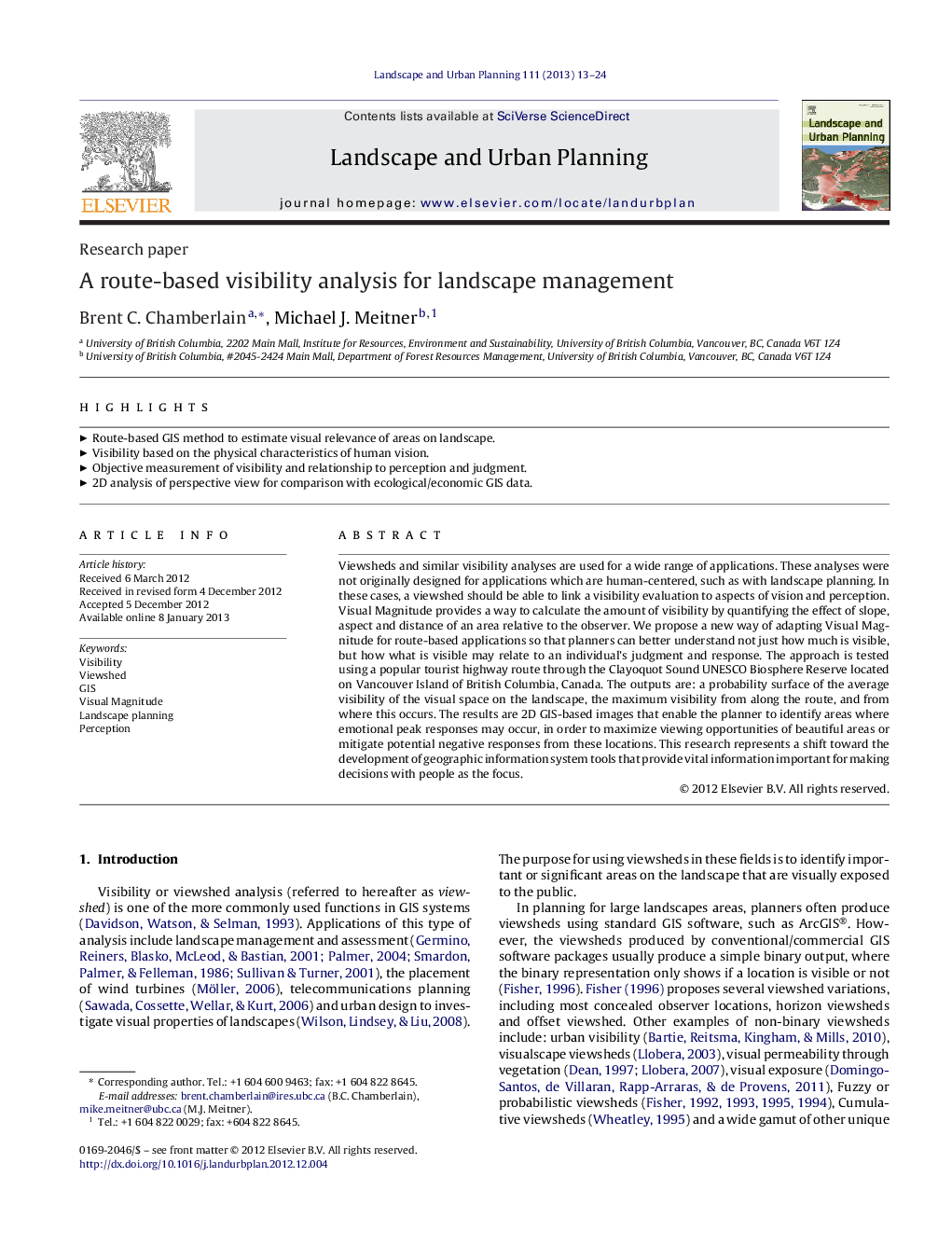| کد مقاله | کد نشریه | سال انتشار | مقاله انگلیسی | نسخه تمام متن |
|---|---|---|---|---|
| 1049358 | 1484647 | 2013 | 12 صفحه PDF | دانلود رایگان |

Viewsheds and similar visibility analyses are used for a wide range of applications. These analyses were not originally designed for applications which are human-centered, such as with landscape planning. In these cases, a viewshed should be able to link a visibility evaluation to aspects of vision and perception. Visual Magnitude provides a way to calculate the amount of visibility by quantifying the effect of slope, aspect and distance of an area relative to the observer. We propose a new way of adapting Visual Magnitude for route-based applications so that planners can better understand not just how much is visible, but how what is visible may relate to an individual's judgment and response. The approach is tested using a popular tourist highway route through the Clayoquot Sound UNESCO Biosphere Reserve located on Vancouver Island of British Columbia, Canada. The outputs are: a probability surface of the average visibility of the visual space on the landscape, the maximum visibility from along the route, and from where this occurs. The results are 2D GIS-based images that enable the planner to identify areas where emotional peak responses may occur, in order to maximize viewing opportunities of beautiful areas or mitigate potential negative responses from these locations. This research represents a shift toward the development of geographic information system tools that provide vital information important for making decisions with people as the focus.
► Route-based GIS method to estimate visual relevance of areas on landscape.
► Visibility based on the physical characteristics of human vision.
► Objective measurement of visibility and relationship to perception and judgment.
► 2D analysis of perspective view for comparison with ecological/economic GIS data.
Journal: Landscape and Urban Planning - Volume 111, March 2013, Pages 13–24